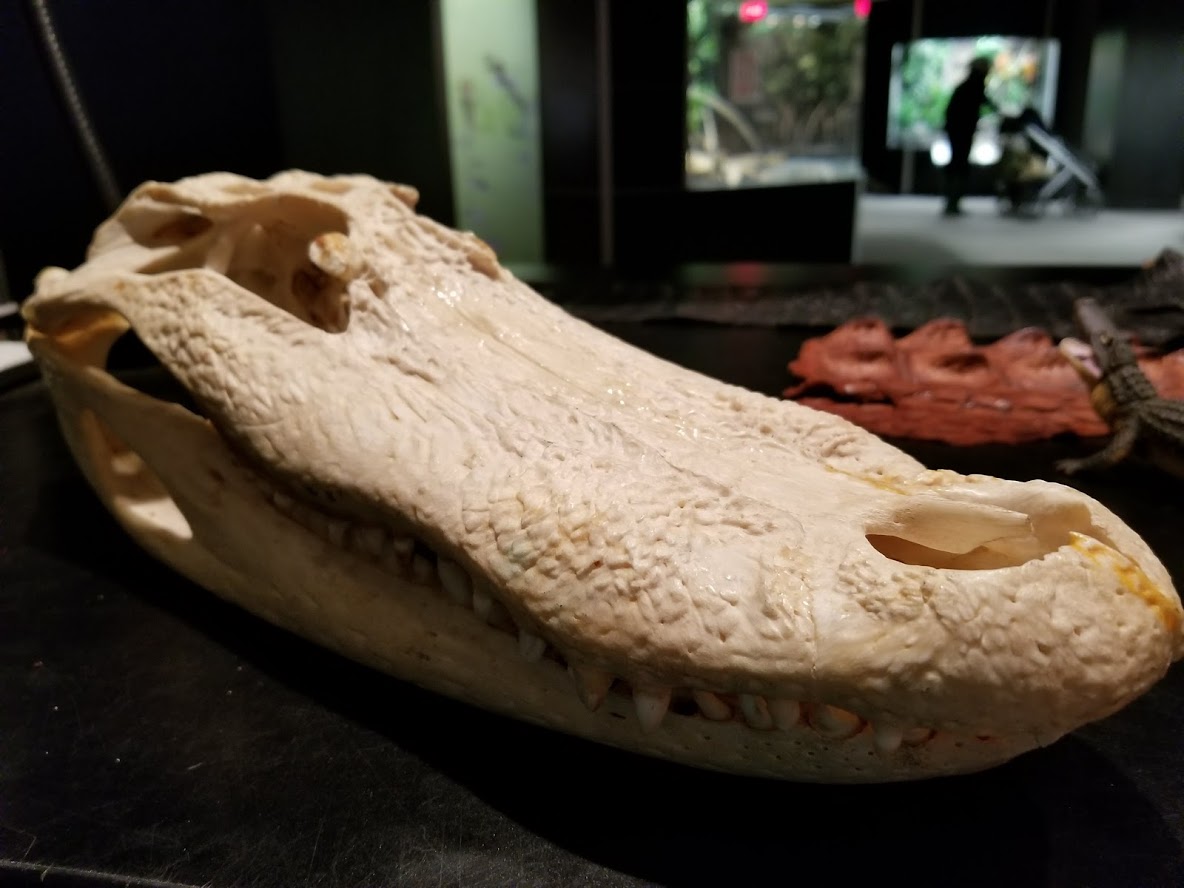Crocs: Ancient Predators in a Modern World
Did you know birds were the closest relatives of crocodiles? Do you believe in the myth about crocodile tears? Did you know crocs could re-grow each of their teeth for about 50 times in their lifetimes? Well, there is so much to learn about these brutal predators.
This week was one amazing week for me. If you have been following me on Instagram, you will know how much I have been having fun with all kinds of animals. Truly, my love for animals has just deepened after the wonderful visit to the San Diego Safari. While we are on the same subject, this week let’s talk about Crocs. What’s to talk, you ask? So much that you should actually check out the special exhibit, Crocs: Ancient Predators in a Modern World at the Academy of Natural Sciences, Drexel University, Philadelphia. This is almost their last week of the exhibit, it ends on May 6. So do check out the these brutal snouts and do not miss out on the live species.
I have always wanted to be a part of anything or everything, remotely or closely, related to animals, which is why, I volunteer at the Academy. That said, I have tons of fun with kids coming there, showing them some fossils, skins, teeth and skeletal structures of these terrifying crocodiles. And while doing this, I learnt so many cool facts and exciting characteristics of these predators.
Siamese Crocodile

The Siamese crocodile is one of the four live species we have at the Academy. She is about 12 years old and is super-active. That’s her, resting under the UV light and trying to cool off her body, after her morning meal and swim. Crocodilians are osteoderms, which means, they have these bony deposits on the skin. The periodic little bumps that you see on their skin, are actually bones, which have blood vessels passing through them, helping them absorbing lots of heat. Once they get excessive heat, they open their mouths, like her, to cool off the excessive heat, kinda like dogs panting.
West African Dwarf Crocodile

I named this African dwarf crocodile, Little Miss Shyness. She is about 8 years old and was very shy for the first one month, almost never came out for posing. But after she established her comfort zone, she went on to engage the visitors with naughty crawls across the glass, and winks and poses for kids watching her. Crocodilians have an beautiful eyeshine because of a reflective layer on the eyes, called Tapetum, which enables their night vision. Next time you see a red glow in the dark, around the lake, make sure you run off far away.
American Alligators

These guys were the show stealers. These 2-year-old babies, came as a family of 6 and are about elbow length. Always on the run, poking each other playfully and fighting for the right spot for chilling in the water – this was usually their daily schedule. Crocodilians are super moms and dads. They take care of their babies, right from when they lay eggs to about 3 years, after which they are ready to take on the world, by themselves. The babies when inside the eggs, have a cute little egg tooth which helps them hatch out of the egg and while doing so, they call out to their mother, with an ‘umph’ sound through vibration.
Broad Snout Caiman
We also had three caimans, another sub species of the crocodilian family, all three females. These girls were extreme introvert and rarely came out of hiding, which is why I couldn’t capture them. A lot of people, both kids and adults, always had a question about how to differentiate between the various sub-species. You can mainly tell from the shape of the snout. A round ‘U’ shape means an alligator, a pointed ‘V’ shape means a crocodile and a long snout with a little bulb in the end is a gharial. Caimans are almost like alligators, except they are shorter in length with broader snouts. There you go, next time you see one, you can totally out-smart your friend on this. The variation is shown with these toy versions below.

Another fun-fact, these guys are apex predators, meaning they are on top of the food chain and have no predators above, except humans of course. And they are capable of re-growing each of their teeth for about 50 times in their lifetime, and when they are done with that, they can’t hunt anymore and eventually starve to death. Huh, major flaw for an apex predator, right? I, for one, just fell for them, while observing them closely for these three months. Some of them have even grown a little in size.
So why the wait? All those in Philadelphia, check them out while they are still at the Academy. Like I said, they are here till May 6, don’t miss out. There are all kinds of activities for kids, ranging from designing your very own crocodilian, to trying to learn croc-talk, and also meeting the keeper to learn some more fun-facts about their behaviors and characteristics.
If you like what you read, subscribe to the blog, to get these posts straight to your inbox. If you have some more cool facts above these bad boys, I would love to talk, in the comments section. Show some love at the likes and share it with your animal-lover friends. Happy Bellowing!!


Can you tell us a bit about croc tears ? Good writing and content by the way.. keep them coming 🙂
Thank you for the good words. 🙂 🙂
Myth says, crocs shed tears for their victims, while feeding on them. Basically false sympathy.
However in reality, crocs shed tears just to lubricate, clean and remove salt deposits from their eyes. When they stay out of water for long durations, their eyes dry out and they shed tears to typically moisturize their eyes.